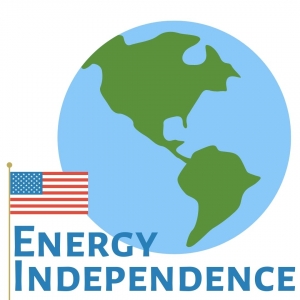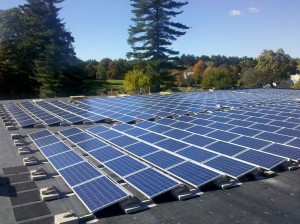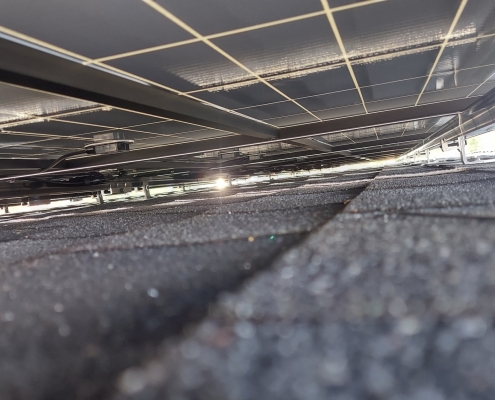Monocrystalline and Polycrystalline Panels
There are two main types of silicon solar cells: polycrystalline and monocrystalline cells. The key distinction between the two is based on how each is made.
There are two main types of silicon solar cells: polycrystalline and monocrystalline cells. The key distinction between the two is based on how each is made.
Below are some of the most frequently asked questions about the Massachusetts SMART Program. For more information and an overview of the program, visit our SMART Program page.
Why install a solar battery? Batteries allow you to store solar energy and reduce your dependence on the grid. In turn, you use more solar power and fewer fossil fuels! How do solar batteries work? Most solar panel systems are connected to the grid and still rely on grid energy when they are producing below […]
So, what is the deal with all black-solar panels? Most solar panel manufacturing companies now have an all-black model, which is becoming more and more popular with customers. However, many people get confused about the difference between the two, and don’t know which type of panel is better for their home.
Definitions Before we dive into all the inverter details, here is a little refresher on how solar panels work. To generate electricity, sunlight shines on a panel and this panel converts the solar energy into DC current. This current flows to the inverter where the it converts DC current to AC current. Your home uses […]

We can talk about energy independence on both a global scale and individual level. On an international level, energy independence refers to producing sufficient energy in the United States to meet our country’s energy needs. If we can meet our needs by producing energy domestically, we will not depend on resources from foreign countries. Being dependent on other countries allows for energy prices to fluctuate based on events like wars, politics, or changes in supply and demand.
For example, the US is heavily dependent on other countries for oil and gas. Because of this, gas prices vary throughout the year. Take the energy crisis of the 1970s. A war in Israel caused oil shortages, and therefore huge spikes in gas prices in the United States. More recently, gas prices have seen an increase across the US due to increased demand for oil post-pandemic. The fluctuating price of gas creates instability in the US energy economy and is unpredictable to consumers.
So, if US could produce most of its own energy, then foreign affairs that change oil or energy prices would not have such a large effect on the economy like they do today. Thus, increasing energy independence will create more economic stability and security. Currently, renewable energy the most important way that the US can produce enough energy to sustain its population. Increasing the proportion of US energy that comes from renewables would greatly decrease our dependence on other countries.
 Energy independence also exists on an individual level. One of the main benefits of producing your own energy is energy security. With renewables such as solar panels, you know that you will always be able to produce your own energy regardless any problems with the grid. This is especially beneficial here in New England because of all the hurricanes and inclement weather that cause frequent power outages. Something as simple as a tree falling on a powerline during a storm can takedown the entire grid in an area for multiple days. However, if your home produces its own energy, there is no need to worry about this during a storm.
Energy independence also exists on an individual level. One of the main benefits of producing your own energy is energy security. With renewables such as solar panels, you know that you will always be able to produce your own energy regardless any problems with the grid. This is especially beneficial here in New England because of all the hurricanes and inclement weather that cause frequent power outages. Something as simple as a tree falling on a powerline during a storm can takedown the entire grid in an area for multiple days. However, if your home produces its own energy, there is no need to worry about this during a storm.
The second benefit of household energy independence is price predictability. Just like oil prices, electricity prices fluctuate based on the cost of fuels, consumer demand, local or global regulations, location, and more. When you produce your own energy with solar panels, you will always know the cost of your energy, because it will be free! Although installing a solar panel system comes at a high cost, you can plan for this. There are many different financing options to help you pay for the system. This type of payment is much more predictable than traditional electricity prices, which change due to a variety of factors and therefore are harder to plan for.
Similarly, traditional electricity prices tend to increase in the summer and winter, when there is high demand for heat and AC. However, with renewable energy you don’t need to feel guilt or stress over making your house a comfortable temperature!

Lastly, there are a variety of environmental benefits that you can feel good about when you produce your own renewable energy. So, producing your own energy can provide you security and predictability, as well as reducing your carbon footprint.
The term “energy transition” is another phrase often used when talking about energy independence. Energy transitions are global shifts from using one type of energy to another. For example, humans transitioned from wood power to coal in the late 19th century.
However, now this term simply refers to the decarbonization of energy, or the switch from fossil fuels to renewables. The transition has already begun, as around 12% of energy consumed in the US comes from renewable sources. However, we still have a lot of work to do. This new energy transition to renewables will be the way that we achieve energy independence on both an individual level and a global scale.

Many recent studies and reports have pointed to the continued rise in popularity in the future of solar power. A report called Energy Goes Green interviewed 100 CFOs of oil and gas companies and found that 38% of these CFOs believe that solar power will be the leading alternative energy source by 2023. The report demonstrated that these CFOs recognize solar energy as an important opportunity for their business. Solar is not only cheaper than traditional oil or gas, but it is also easier to generate solar energy once the infrastructure is built. Additionally, because of increased demand and better technology, the cost of installing solar power systems has decreased. For these reasons, many of these energy companies plan on implementing solar power as a part of their business.
However, these companies aren’t planning to switch to 100% renewables anytime soon. They face many roadblocks. For example building new infrastructure is expensive. Also, there are currently high tariffs on imported materials used to build solar panels. But, these CFOs do recognize that consumer demand and new technology will continue to lower the cost of solar energy, and they are willing to adapt to renewable energy sources as long as they stay in demand and the prices stay low. This is a big step, considering that these companies are currently 100% focused on fossil fuels.
More evidence of the future of energy prices is outlined by a study reported in the Joule Journal. This study found that increasing the US energy bundle to 90% renewables by 2050 would be cheaper than keeping energy consumption as it is. Currently, the average cost of electricity in the US is 13 cents per kilowatt hour. This rate is even higher in Massachusetts and Rhode Island (21 cents and 18.6 cents respectively). The new energy bundle that is 90% renewable would cost about 3.6 cents per kilowatt hour.
Currently, the demand for renewable energy is continuing to grow as fossil fuel consumption falls in the United States. According to the latest EIA report, this April renewable energy provided 25.7% of the total electricity produced in the US. As of this April, fossil fuels contributed a smaller percentage of total electricity than renewable energy, contributing only 22% compared to 25.7% from renewables.
So, the future is bright for solar! Evidence shows that renewable energy consumption is rising, and prices are falling as compared to fossil-fueled powered energy. Even large oil and gas companies recognize this trend as a business opportunity. So, now is a great time to make the investment in solar panels to continue the energy transition!
What is the largest indicator that a given house will have solar panels? It is not what you may think! According a study done by the Potsdam Institute for Climate Impact Research, geographical distance from a house with solar panels is the largest indicator of if a given house will have solar panels. This means […]
We all know that solar power is clean and environmentally friendly. But how exactly do your solar panels help the earth? Here are six ways that solar energy benefits the environment:
1. Solar panels do not emit any carbon dioxide while producing energy
As the weather heats up, here are some things to keep in mind about your solar panels.

Many customers worry about their panels losing efficiency in the heat. While it is true that heat affects solar panels, they don’t tend to lose efficiency until it gets above 77 °F. Solar panels have a temperature coefficient, which tells you how much efficiency decreases due to a one degree increase in temperature from the optimum temperature (77 °F). These coefficients tend to be small. For example, the coefficient of SunPower solar panels, which we often use at SGE, is -0.29%. This means that at 80 degrees, the efficiency of the solar panel only decreases by a little under 1%.
Additionally, solar panels actually keep roofs cooler. They absorb heat from the air and can make a roof up to 5 degrees cooler. The maximum temperature that many solar panels can withstand is 185°F, so there is no need to worry about them even on an extremely hot day.
At SGE, when we install solar panels, we leave some space between the panels and the roof. This allows for some airflow and keeps the panels cooler to decrease inefficiency.
So, as long as you don’t touch solar panels on a hot day (they are very hot to the touch), there is no need to worry about your panels as summer approaches. In fact, you might even find your house and roof to be a bit cooler because of them!
